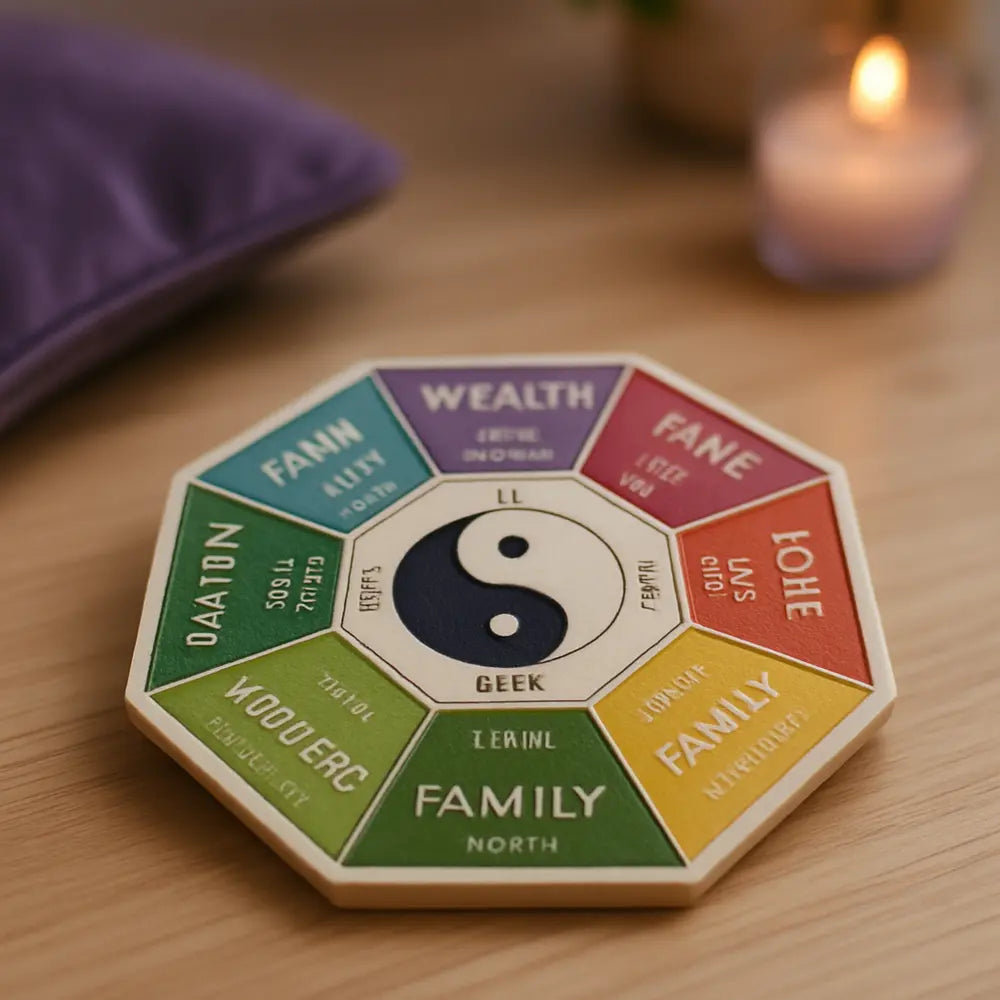
Cartes Bagua
8 produits
Affiche 1 - 8 de 8 produits
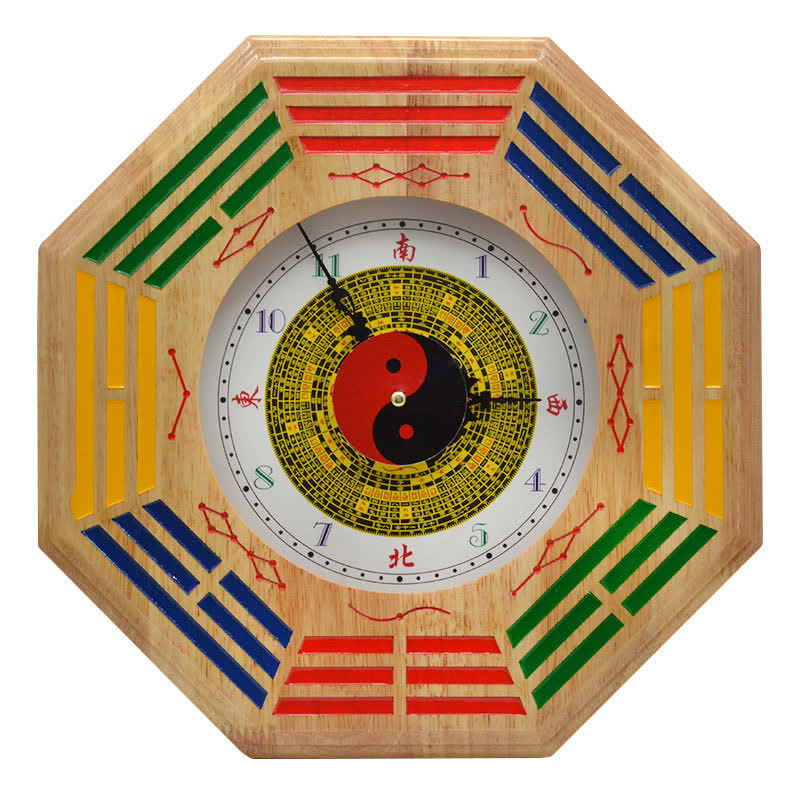
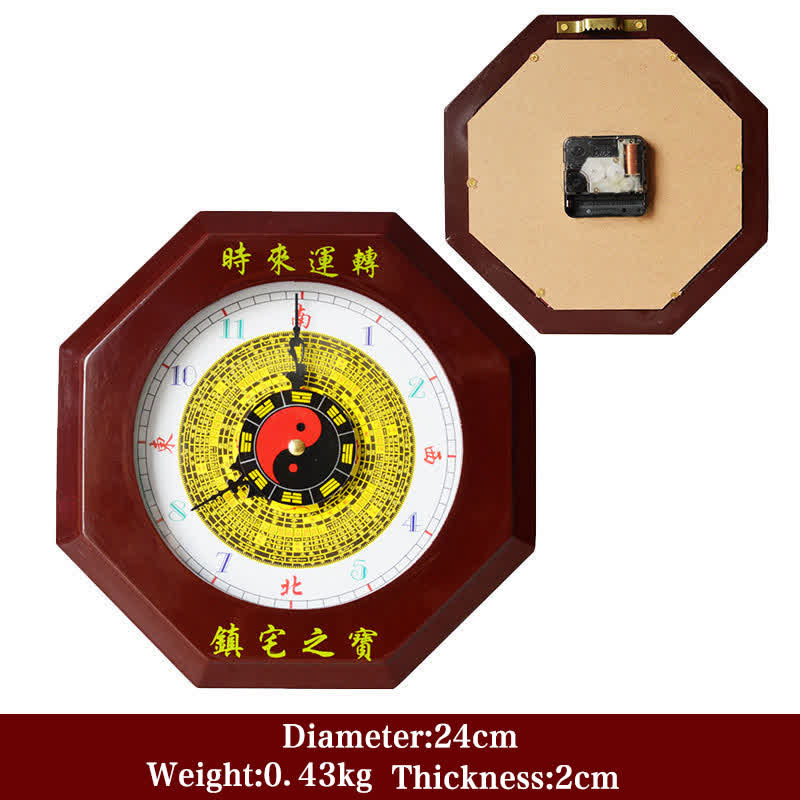
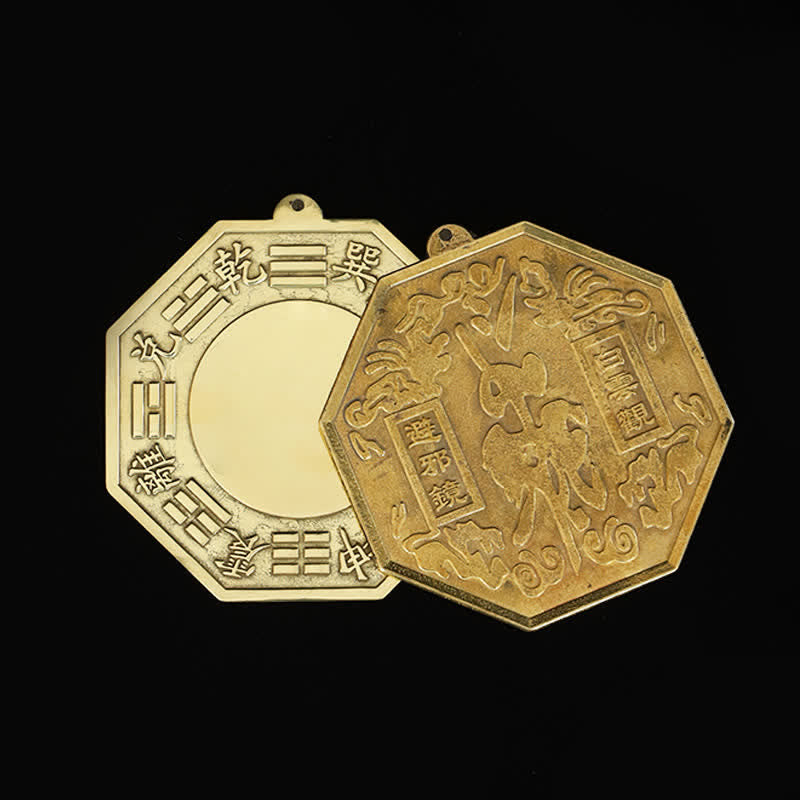
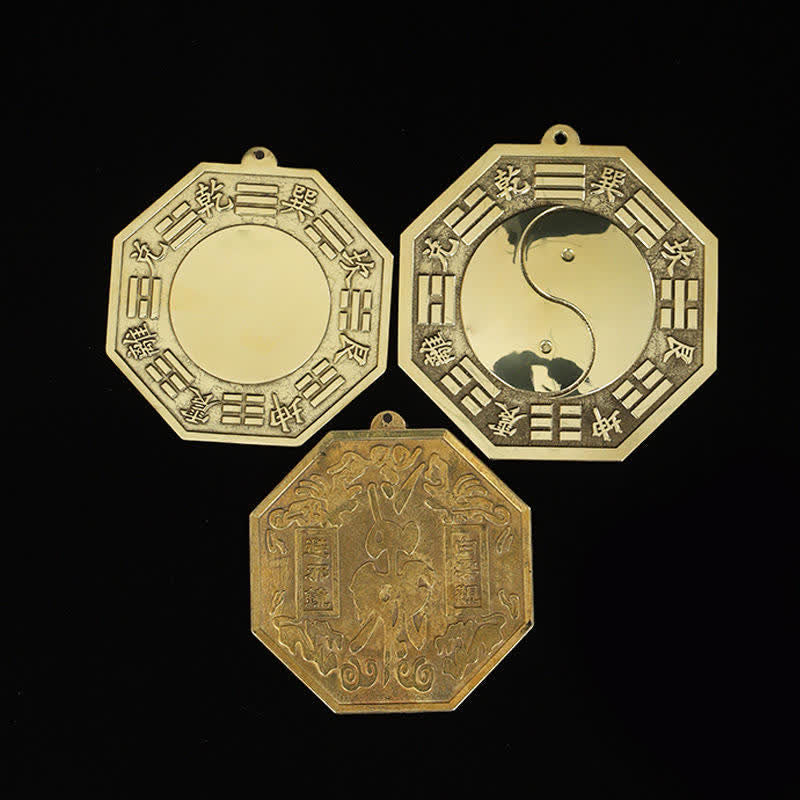
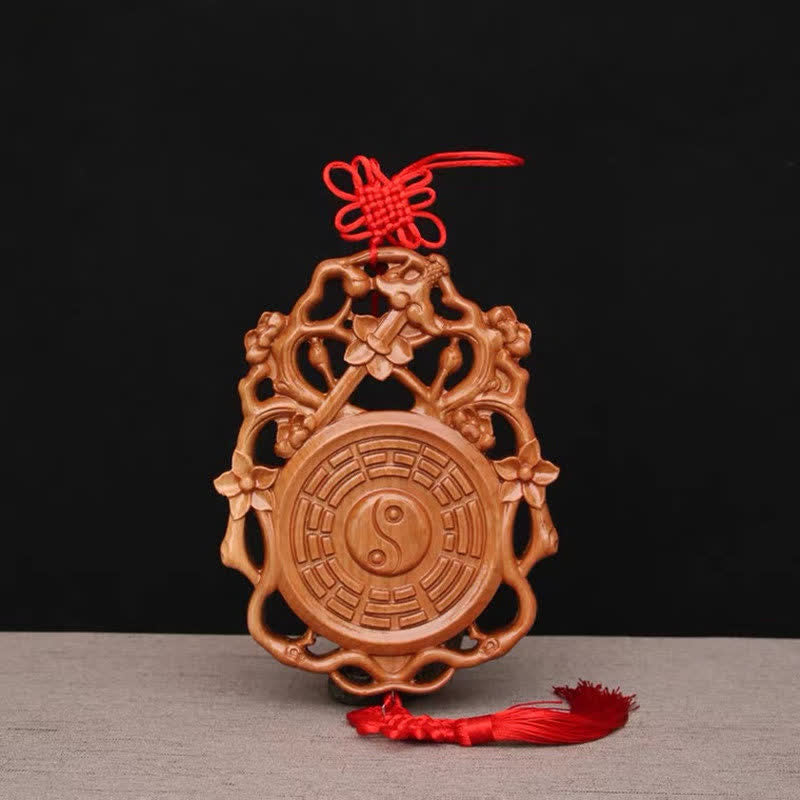
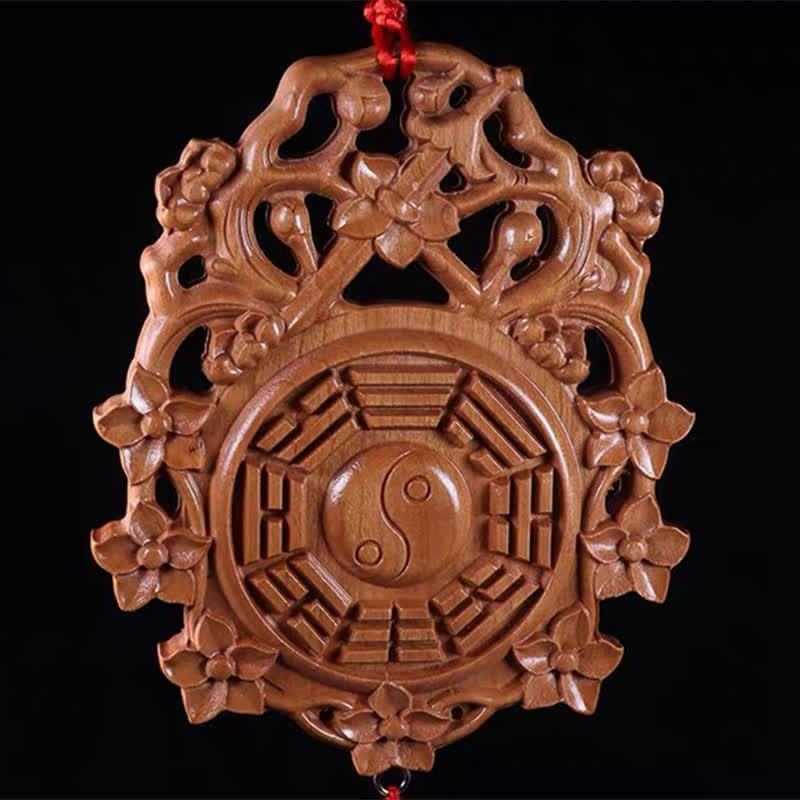
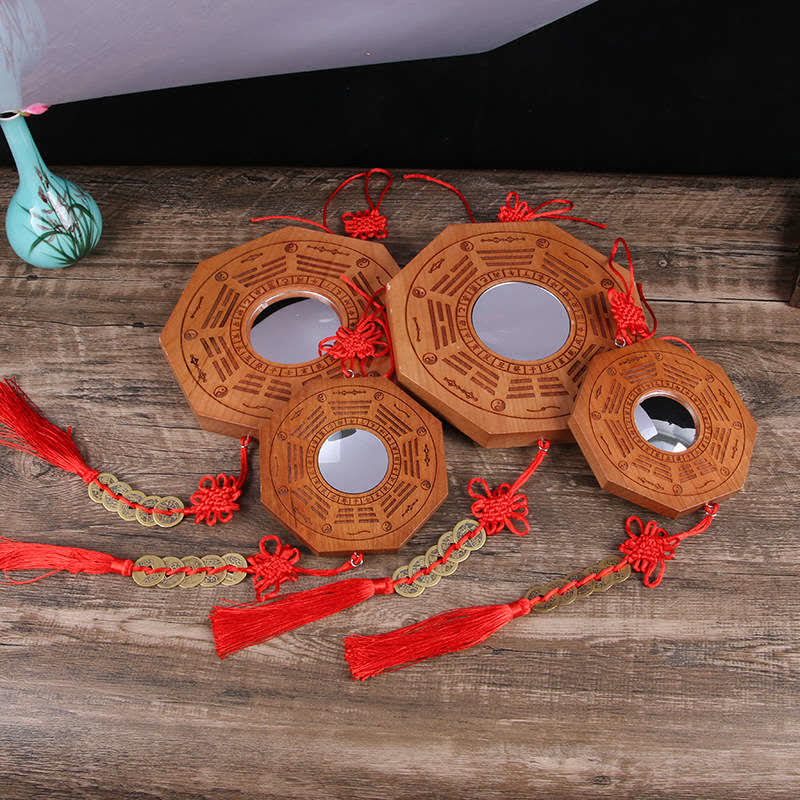
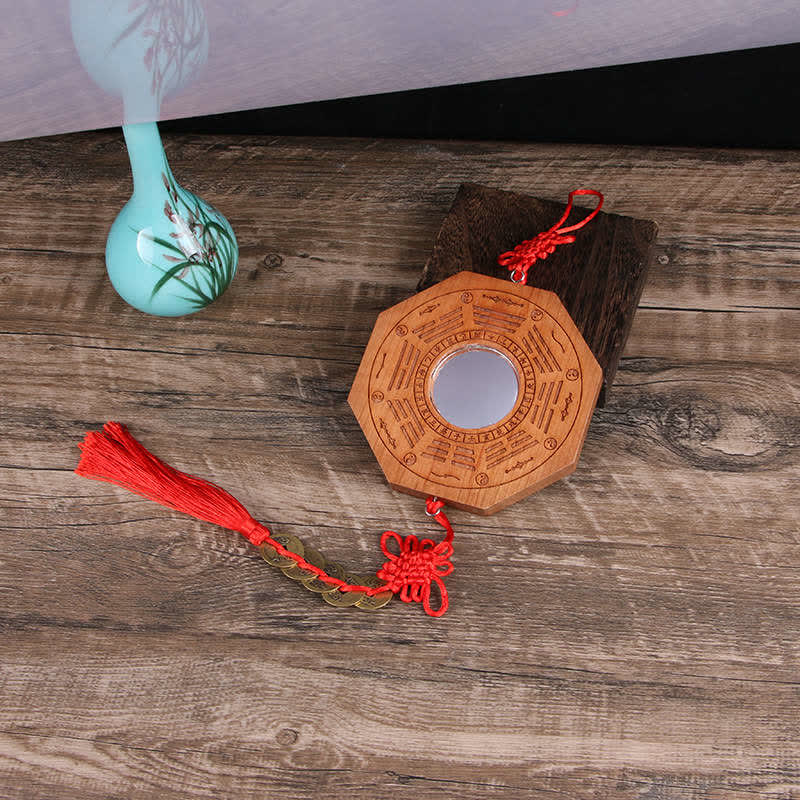
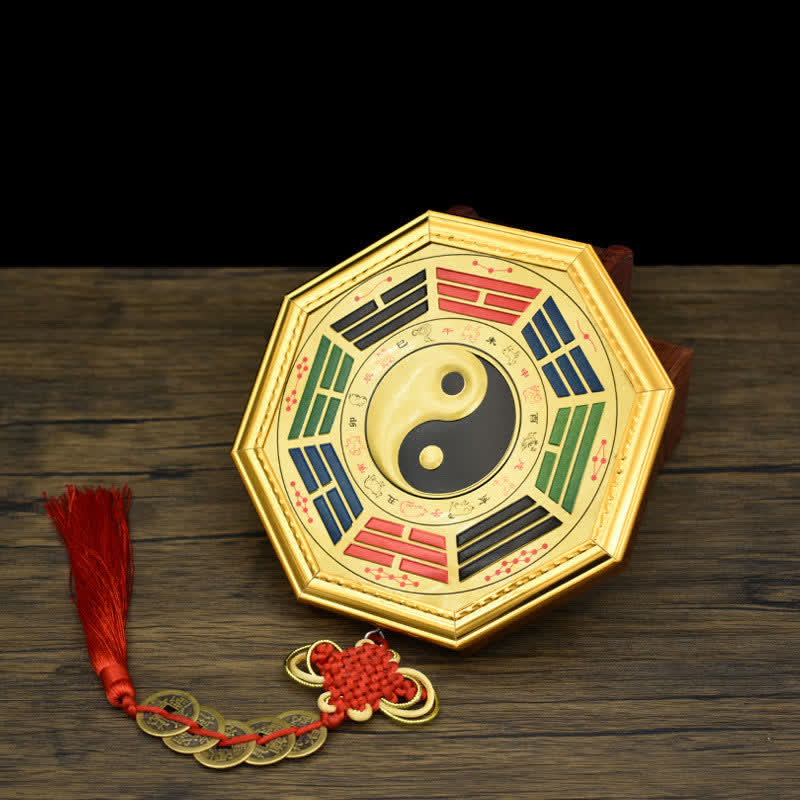


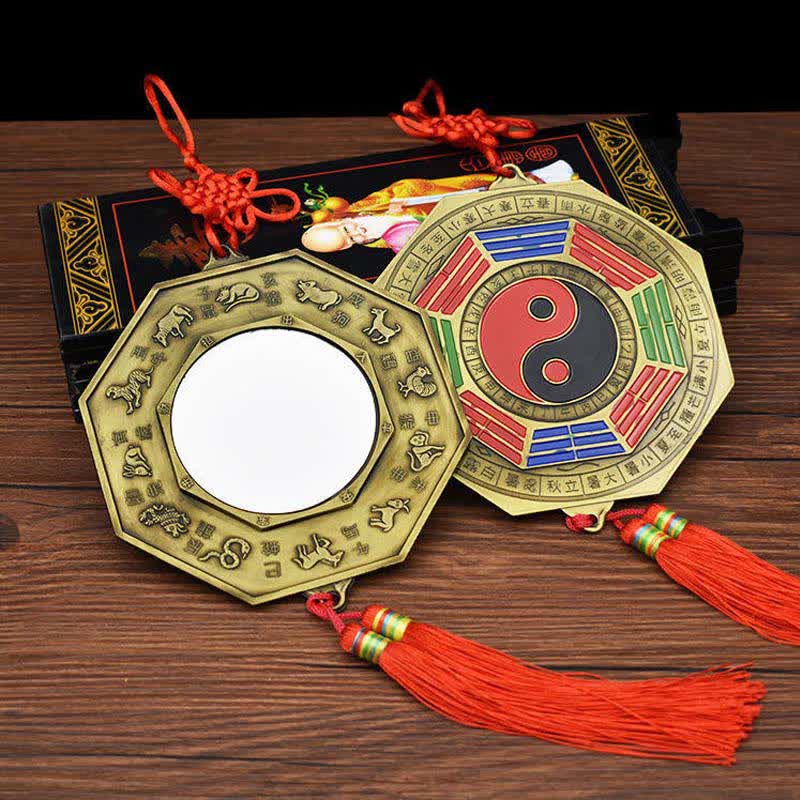
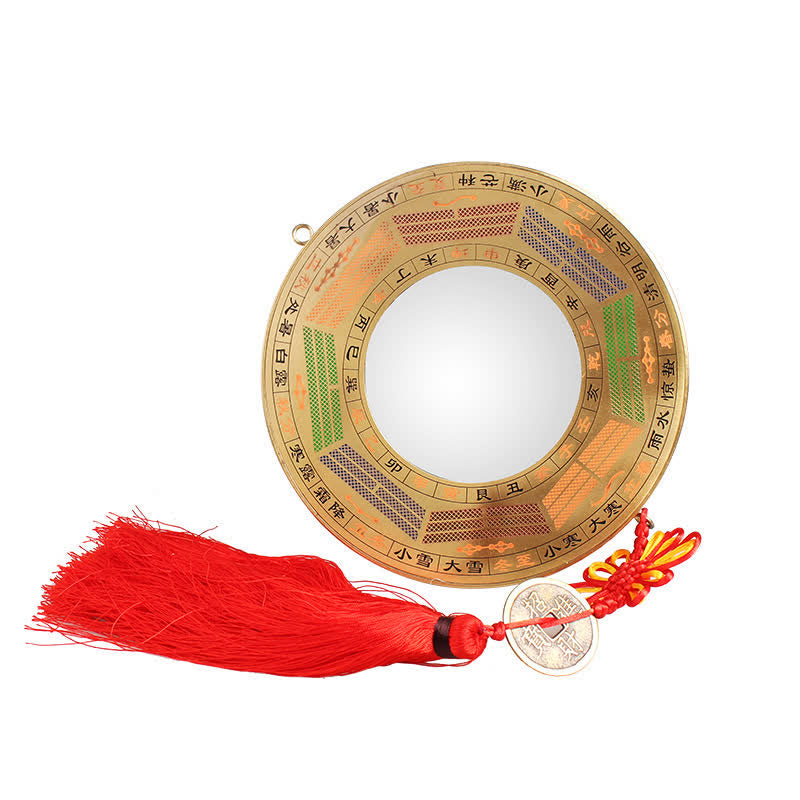

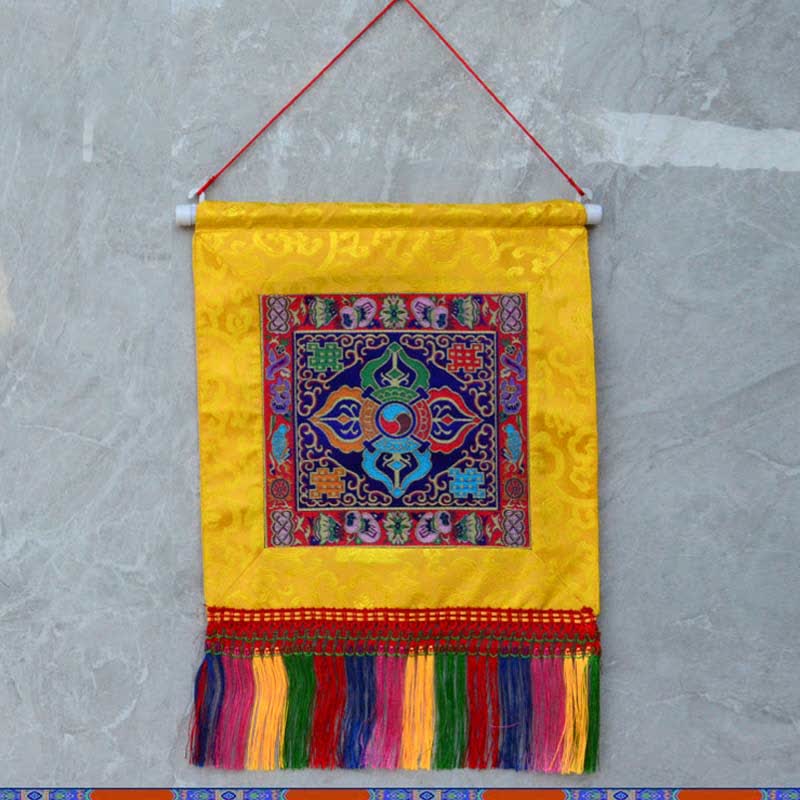
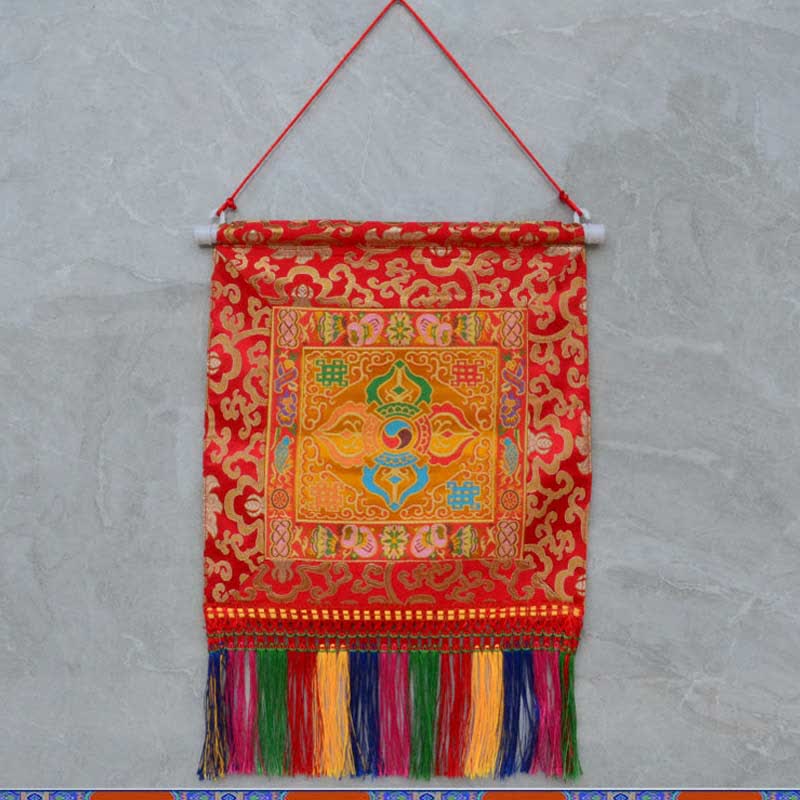
Libérez la sagesse ancestrale du Feng Shui et transformez vos espaces de vie en havres d'équilibre et d'énergie positive grâce à notre collection de cartes Bagua . Chez Healing Sounds, nous comprenons l'impact profond de votre environnement sur votre bien-être, et une carte Bagua est un outil fondamental pour harmoniser votre environnement.
Cette collection vous donne accès à des cartes Bagua magnifiquement conçues et soigneusement créées, essentielles pour quiconque souhaite s'immerger dans l'art du Feng Shui pour sa maison, son bureau ou tout autre espace personnel. Découvrez comment cette puissante boussole énergétique peut vous guider vers la prospérité, la santé, les relations et bien plus encore, en alignant votre environnement sur le flux naturel du Chi.
Comprendre la carte Bagua : un outil ancien pour l'harmonie moderne
La carte bagua , souvent appelée carte bagua feng shui , est une carte énergétique essentielle utilisée en Feng Shui pour analyser et comprendre le schéma énergétique d'un espace donné. Ses origines remontent à des milliers d'années, dans la philosophie chinoise ancienne, ancrée dans le Yi King (Livre des Mutations). Le terme « bagua » lui-même signifie « huit zones » ou « huit trigrammes », qui constituent les principes fondamentaux de cette pratique.
Cette carte complexe divise un espace en neuf zones distinctes, ou « guas », chacune correspondant à un aspect spécifique de la vie. Ces zones ne sont pas seulement symboliques ; elles représentent différents types d'énergie qui, une fois équilibrées et renforcées, peuvent améliorer significativement votre bien-être général et votre situation. Comprendre le Bagua est la première étape vers la création consciente d'un environnement qui répond à vos aspirations et favorise l'harmonie.
Qu'est-ce qu'une carte énergétique Feng Shui
Considérez la carte Bagua comme une carte énergétique Feng Shui sophistiquée pour votre maison ou votre bureau. Ce diagramme pratique vous aide à identifier les liens entre les différentes sections de votre espace et des domaines de vie spécifiques. En superposant cette carte à votre plan, vous pouvez identifier les zones liées à la richesse, à la santé, à l'amour, à la carrière, etc.
L'objectif principal de ce tableau Feng Shui pour la maison est d'identifier les zones où le Chi (énergie vitale) peut stagner, être bloqué ou déséquilibré. Une fois ces zones identifiées, des soins ou des améliorations Feng Shui spécifiques peuvent être appliqués pour revitaliser l'énergie et favoriser un flux positif qui nourrit l'aspect vital correspondant. C'est un outil dynamique qui vous permet de façonner activement la qualité énergétique de votre environnement.
Le concept de base Les neuf domaines de la vie
La carte Bagua est généralement représentée par un octogone ou un carré, divisé en neuf sections égales. Huit sections extérieures correspondent aux huit trigrammes, et la section centrale représente la santé et l'unité. Chacun de ces neuf domaines de vie feng shui possède une signification unique et est associé à des couleurs, des éléments, des formes et même des membres de la famille spécifiques.
Comprendre ces domaines est essentiel pour une application efficace du Feng Shui. Cela vous permet d'ajuster votre environnement de manière ciblée, garantissant ainsi que chaque aspect de votre vie reçoive le soutien énergétique nécessaire à son épanouissement. Cette approche holistique fait de la carte Bagua un outil puissant pour le développement personnel et l'harmonie environnementale.
Les neuf domaines de la vie expliqués par votre carte Feng Shui Bagua
La carte du bagua décrit minutieusement neuf zones clés qui régissent différentes facettes de votre existence. Chaque gua est un concentré d'énergies spécifiques et, correctement activé et équilibré, peut apporter de profonds changements positifs. Explorons ces zones vitales.
Richesse et prospérité (Xun)
Située à l'extrême gauche de votre espace depuis l'entrée (école BTB) ou le sud-est (école Compass), cette zone régit votre abondance financière, votre richesse matérielle et votre sentiment de prospérité. L'amélioration de cette zone peut attirer de meilleures opportunités financières et un sentiment de richesse.
Renommée et réputation (Li)
Situé au centre-arrière (BTB) ou au Sud (Boussole), ce gua est lié à la perception que vous avez du monde, à votre réputation, à vos réalisations et à votre reconnaissance. Activer cette zone peut vous aider à gagner le respect, à éclairer votre chemin et à réaliser vos ambitions.
Amour et relations (Kun)
Située à l'extrême droite (BTB) ou au sud-ouest (Boussole), cette zone est le domaine de l'amour romantique, du mariage, des relations amoureuses et de l'amour-propre. Entretenir cette zone peut améliorer les relations existantes, attirer un nouveau partenaire ou favoriser des liens plus profonds avec les autres.
Famille (Zhen)
Située au milieu à gauche (BTB) ou à l'est (Boussole), cette zone est liée à la famille, aux ancêtres et aux nouveaux commencements. Renforcer cette zone peut favoriser l'harmonie familiale, guérir les blessures du passé et favoriser la croissance et la vitalité.
Santé et Unité (Tai Chi)
Au cœur même de la carte Bagua, le Tai Chi est essentiel à la santé, à l'équilibre et au bien-être général. Il relie et ancre tous les autres domaines. Garder cet espace central clair et dynamique est essentiel à l'intégrité énergétique de toute votre maison.
Enfants et créativité (Dui)
Situé au milieu droit (BTB) ou à l'ouest (Boussole), ce gua influence la créativité, la joie, les enfants et les projets que vous souhaitez réaliser. Stimuler cette zone peut stimuler votre expression créative, apporter joie et enjouement, et soutenir les questions liées aux enfants.
Connaissance et auto-culture (Gen)
Située dans le coin gauche (BTB) ou au nord-est (Boussole), cette zone est dédiée à la sagesse, à l'apprentissage, à la croissance spirituelle et à la paix intérieure. L'activation de cette zone peut favoriser vos études, vos pratiques de méditation et votre développement personnel.
Carrière et chemin de vie (Kan)
Situé au centre, aligné avec l'entrée principale (BTB) ou le Nord (Boussole), ce gua gouverne votre carrière, votre objectif de vie et votre cheminement. Renforcer cette zone peut clarifier votre parcours professionnel, attirer de nouvelles opportunités et assurer la fluidité de vos efforts.
Les gens serviables et les voyages (Qian)
Située dans le coin droit (BTB) ou nord-ouest (Boussole), cette zone est liée aux mentors, aux relations utiles, aux bienfaiteurs et aux voyages. En valorisant cette zone, vous attirerez des personnes bienveillantes dans votre vie et faciliterez des parcours fluides et bénéfiques.
Comment utiliser la carte Bagua pour votre maison et vos espaces
Utiliser efficacement une carte Bagua pour votre maison implique de l'orienter correctement et de l'appliquer à votre plan d'étage. Ce processus vous permet d'identifier les neuf domaines de vie de votre logement, ouvrant ainsi la voie à des améliorations Feng Shui ciblées. Comprendre les bases de son application est essentiel pour libérer son potentiel transformateur.
Que vous analysiez une maison entière, une seule pièce ou même votre bureau, les principes restent les mêmes. L'objectif est de créer une circulation harmonieuse du Chi, garantissant que chaque espace de vie soit soutenu et dynamique sur le plan énergétique. Nombreux sont ceux qui trouvent utile de commencer par une carte Bagua imprimable , permettant de visualiser facilement leurs plans.
Aligner correctement la carte Bagua
Il existe deux principales écoles de Feng Shui qui dictent comment aligner la carte bagua : la secte du Chapeau Noir (BTB) ou école intuitive, et l'école classique ou école de la boussole. La méthode BTB est souvent considérée comme plus simple pour les débutants.
Pour l'école BTB, alignez le bord inférieur de la carte Bagua (côté Connaissances, Carrières et Personnes Servantes) avec le mur contenant la porte d'entrée principale de l'espace à cartographier. La porte elle-même s'insère généralement dans l'une de ces trois zones inférieures ou les traverse.
Pour l'École de Boussole Classique, vous avez besoin d'une lecture précise de la boussole. Vous vous placerez à l'entrée principale, face à l'extérieur, pour déterminer l'orientation précise de votre maison. La carte bagua avec les directions est ensuite orientée selon ces points cardinaux (par exemple, Nord pour la Carrière, Sud pour la Gloire).
Demande d'un plan d'étage
Une fois votre méthode d'alignement choisie, superposez la grille à neuf carrés du Bagua (ou la forme octogonale, conceptuellement divisée en neuf) sur le plan de votre maison. Essayez d'adapter la carte du Bagua à la forme générale de votre maison le plus précisément possible. Tracez des lignes sur votre plan pour délimiter les neuf guas distincts.
Si votre maison a une forme irrégulière (par exemple, en L ou avec des angles manquants), certaines zones du Bagua peuvent être hors de la structure physique ou « manquantes ». Ces zones manquantes peuvent indiquer des déséquilibres nécessitant des soins ou des ajustements Feng Shui spécifiques pour les corriger énergétiquement. Une analyse détaillée du plan du Bagua peut révéler ces nuances.
Analyse des pièces individuelles
L'intérêt de la carte Bagua réside dans son adaptabilité. Vous pouvez l'appliquer non seulement à toute votre maison, mais aussi à des pièces individuelles. Par exemple, vous pouvez créer une carte Feng Shui pour votre chambre en alignant la carte Bagua avec la porte principale de la chambre.
Cela permet une approche plus fine du Feng Shui, vous aidant à optimiser les espaces clés comme votre chambre pour le repos et les relations, ou votre bureau à domicile pour la réussite professionnelle et la productivité. Une carte Feng Shui spécifique à chaque pièce permet d'affiner l'énergie des zones où vous passez beaucoup de temps.
Approches cartographiques Bagua (boussole classique et BTB)
Lorsque vous vous lancez dans votre aventure Feng Shui avec une carte Bagua , vous découvrirez deux principales méthodes d'application : l'école classique (ou boussole) et l'école bouddhiste tibétaine (BTB) ou intuitive de la secte du Chapeau Noir. Bien que toutes deux visent à harmoniser l'énergie, leur approche de l'orientation du Bagua diffère sensiblement, ce qui peut influencer l'aménagement de votre maison selon le Feng Shui .
Le choix dépend souvent de vos préférences personnelles, des informations disponibles (comme des relevés précis de la boussole) et parfois du style architectural spécifique du lieu. Chez Healing Sounds, nous proposons des cartes Bagua adaptables à chaque approche, vous permettant ainsi de choisir celle qui vous convient le mieux.
La carte et les directions de la boussole du Bagua classique
La carte du Bagua classique , aussi appelée Feng Shui traditionnel, repose en grande partie sur des directions cardinales précises. Pour utiliser cette méthode, vous devez d'abord déterminer l'orientation magnétique exacte de votre maison ou de votre espace. Le Bagua est ensuite aligné de manière à ce que chacun des huit trigrammes (et leurs domaines de vie correspondants) corresponde à sa véritable direction cardinale ou intercardinale.
Par exemple, le gua Kan (Carrière) est toujours associé au Nord, le gua Li (Célébrité) au Sud, le gua Zhen (Famille) à l'Est et le gua Dui (Enfants/Créativité) à l'Ouest. Ce système, souvent appelé feng shui de la boussole , est considéré par certains comme plus complexe, mais aussi plus nuancé, prenant en compte des facteurs tels que la date de construction du bâtiment dans des applications plus avancées (feng shui de l'étoile volante).
La carte du BTB Bagua et l'entrée principale
La méthode Feng Shui Bagua du Chapeau Noir (BTB), popularisée en Occident, simplifie le processus d'orientation. Elle ne nécessite pas de boussole. La carte Bagua est toujours alignée par rapport à l'entrée principale de l'espace analysé, qu'il s'agisse d'une maison, d'un appartement, d'une pièce ou même d'un bureau.
Pour utiliser la carte énergétique feng shui BTB, placez-vous devant la porte d'entrée et regardez l'espace. La rangée inférieure du Bagua (Connaissance, Carrière, Entraide) est alignée avec le mur qui abrite cette porte d'entrée. Cela la rend très accessible, car son orientation est constante, quelles que soient les directions de la boussole. Elle est souvent plébiscitée pour sa simplicité d'utilisation et son application intuitive, notamment dans les environnements urbains modernes où la lecture de la boussole peut s'avérer complexe.
Application de votre carte Bagua Chambre Bureau et au-delà
La polyvalence de la carte Bagua étend son application au-delà de l'aménagement général de votre maison. Vous pouvez utiliser ses principes pour affiner l'énergie de zones spécifiques et cruciales, comme votre chambre pour un sommeil réparateur et des relations harmonieuses, ou votre bureau pour une productivité accrue et une évolution professionnelle. Une analyse ciblée de la carte Bagua pour la chambre ou le bureau peut engendrer des changements positifs significatifs.
En concentrant la grille du Bagua sur ces zones individuelles, vous comprenez mieux comment le microenvironnement influence les activités et les énergies spécifiques associées à cet espace. Healing Sounds encourage cette application détaillée pour maximiser les bienfaits de votre pratique du Feng Shui.
Optimisez votre sanctuaire de sommeil avec une carte Feng Shui pour votre chambre
Votre chambre est un espace essentiel pour le repos, le ressourcement et l'intimité. Adopter une carte Feng Shui pour l'aménagement de votre chambre peut la transformer en un véritable sanctuaire. Alignez le Bagua avec la porte de la chambre (en utilisant la méthode BTB, par exemple). Cela vous aidera à identifier le coin Amour et Relations, le coin Santé (souvent le plus adapté au lit) et les autres zones de la pièce.
Les améliorations peuvent inclure des couleurs spécifiques issues d'un nuancier bagua , des œuvres d'art ou la disposition des meubles pour favoriser la tranquillité et la connexion. Par exemple, renforcer la zone Kun (Amour) dans votre chambre peut favoriser une intimité plus profonde, tandis que veiller à ce que la zone Kan (Carrière) ne soit pas trop activée peut favoriser un meilleur sommeil en réduisant le stress lié au travail dans votre espace de repos.
Améliorer la productivité avec une carte Bagua pour le bureau
Que ce soit pour un bureau à domicile ou en entreprise, l'utilisation d'une carte Bagua peut considérablement améliorer la concentration, la créativité et la réussite professionnelle. Superposez le Bagua sur le plan de votre bureau, ou même simplement sur votre bureau. Identifiez le gua de la carrière (Kan), le gua de la richesse (Xun) et le gua de la renommée (Li).
L'emplacement stratégique de votre bureau, le choix de la décoration et l'organisation selon le Bagua peuvent créer un environnement propice à la réussite. Par exemple, positionner votre bureau en « position de commandement » (face à la porte, mais pas directement dans son axe) dans un gua puissant comme Carrière ou Richesse peut renforcer votre autorité et vos opportunités. L'utilisation d'outils d'aménagement feng shui comme le Bagua permet de structurer votre espace de travail pour une circulation énergétique optimale.
Au-delà de la maison et du bureau Adaptation du Bagua
Les principes de la carte Bagua ne se limitent pas aux pièces traditionnelles. Vous pouvez appliquer ce tableau Feng Shui pour la maison ou le bureau à pratiquement tout espace défini où vous souhaitez améliorer la circulation énergétique. Il peut s'agir d'un jardin, d'un poste de travail spécifique, ou même d'une simple étagère.
L'essentiel est de définir les limites de l'espace, puis d'appliquer la grille du Bagua en conséquence. Cette adaptabilité fait du Bagua un outil incroyablement pratique et polyvalent pour quiconque cherche à apporter plus d'harmonie et d'intentionnalité à son environnement, favorisant ainsi une énergie positive dans tous les aspects de sa vie.
Les avantages transformateurs de l'utilisation d'une carte Bagua
Intégrer une carte Bagua à votre vie offre bien plus qu'un aménagement esthétique de votre espace ; c'est un moyen d'atteindre de profonds changements énergétiques et des améliorations tangibles dans divers domaines de votre vie. La pratique du Feng Shui, dont le Bagua est la pierre angulaire, vise à cultiver une circulation harmonieuse du Chi (énergie vitale), favorisant ainsi bien-être, prospérité et équilibre.
Chez Healing Sounds, nous croyons au pouvoir d'une vie intentionnelle, et la carte feng shui bagua est un outil essentiel pour y parvenir. En comprenant et en activant les différents guas, vous pouvez co-créer activement une vie en résonance avec vos aspirations les plus profondes.
Cultiver un flux d'énergie positif
L'un des principaux avantages d'une carte bagua est de pouvoir identifier et corriger les zones où l'énergie peut stagner ou être bloquée. En appliquant des remèdes et des améliorations Feng Shui appropriés, comme des couleurs, des éléments ou des objets spécifiques, vous pouvez favoriser une circulation fluide et dynamique du Chi dans votre environnement. Cette énergie positive nourrit tous les aspects de la vie feng shui , créant une atmosphère positive et stimulante.
Améliorer des domaines de vie spécifiques
Le Bagua offre un cadre clair pour se concentrer sur les aspects spécifiques de votre vie que vous souhaitez améliorer. Que vous cherchiez à booster votre carrière, à nouer une relation amoureuse, à améliorer votre santé ou à accroître votre richesse, la carte vous guide vers la zone énergétique correspondante dans votre espace. Des améliorations ciblées dans ces guas peuvent agir comme de puissants attracteurs, alignant votre environnement sur vos intentions. Par exemple, utiliser une carte Bagua avec des indications (école classique) ou par entrée (école BTB) vous permet d'identifier précisément ces zones cruciales.
Créer une plus grande harmonie et un meilleur équilibre
Un espace bien équilibré, tel que guidé par la carte bagua pour la maison , contribue à un sentiment de paix intérieure et d'harmonie globale. Lorsque les neuf sphères de la vie sont soutenues énergétiquement et en équilibre, cela crée les bases d'une vie plus stable et épanouissante. Cette approche holistique aborde le bien-être à de multiples niveaux, du physique et émotionnel au spirituel.
Sensibilisation et intentionnalité accrues
Apprendre à utiliser la carte bagua et à l'appliquer à votre espace développe naturellement une plus grande conscience de votre environnement et de son impact sur vous. Cela encourage une approche plus intentionnelle de la vie, où vous façonnez consciemment votre environnement pour refléter et soutenir vos objectifs et vos valeurs. Cette interaction consciente avec votre espace peut être profondément enrichissante.
Choisir votre carte Bagua idéale parmi les sons de guérison
Chez Healing Sounds, nous proposons une sélection rigoureuse de cartes Bagua conçues pour vous accompagner dans votre cheminement vers le Feng Shui. Nos cartes sont créées avec authenticité et clarté, que vous soyez un praticien expérimenté ou un novice en Feng Shui. Nous comprenons qu'une carte Bagua de qualité est un investissement dans l'énergie de votre maison et votre bien-être.
Notre collection propose différents styles, allant des cartes Bagua détaillées et imprimables, faciles à utiliser avec vos plans, aux pièces plus esthétiques, rappelant les principes du Feng Shui. Notre objectif est de vous fournir des outils à la fois pratiques et inspirants, pour vous accompagner dans votre quête d'un environnement de vie ou de travail harmonieux.
Lors du choix de votre carte, tenez compte de sa facilité d'utilisation pour identifier les domaines de vie feng shui et de la clarté de ses indications, notamment en ce qui concerne les approches feng shui BTB et boussole . L'objectif est de trouver une carte qui vous correspond et vous permette d'appliquer avec confiance ces principes ancestraux à la vie moderne.
Embarquez pour un voyage de transformation avec une carte bagua de Healing Sounds. En comprenant et en exploitant la configuration énergétique de votre espace, vous pouvez créer un environnement qui soutient activement vos rêves, améliore votre bien-être et apporte un profond sentiment d'équilibre et d'harmonie à votre vie. Explorez notre collection et découvrez la carte bagua feng shui idéale pour créer votre havre de paix idéal.
Questions fréquemment posées sur les cartes Bagua
La carte bagua divise chaque espace en neuf zones, ou « guas », chacune correspondant à un aspect spécifique de la vie, comme la richesse, la santé, les relations et la carrière. En superposant cette grille énergétique au plan de votre maison ou de votre pièce, vous pouvez identifier les parties de votre espace qui influencent ces domaines de vie.
Une fois identifiées, vous pouvez procéder à des ajustements Feng Shui ciblés, comme l'ajout de couleurs, d'éléments ou d'objets spécifiques, pour stimuler la circulation de l'énergie positive (Chi) dans ces zones, améliorant ainsi l'aspect de vie correspondant. Il s'agit en fait d'un plan directeur pour harmoniser votre environnement avec vos intentions.
Chacun des neuf domaines de la carte bagua représente un aspect distinct de la vie, permettant un travail énergétique ciblé. Par exemple, Xun (richesse/prospérité) gouverne l'abondance financière ; Li (célébrité/réputation) influence la perception que l'on a de vous ; Kun (amour/relations) influence les relations et l'amour-propre.
D'autres domaines incluent Zhen (Famille/Ancêtres), Tai Chi (Santé/Unité au centre), Dui (Enfants/Créativité), Gen (Connaissance/Développement personnel), Kan (Carrière/Chemin de vie) et Qian (Aide aux personnes/Voyages). L'objectif est de fournir un cadre pour comprendre et valoriser ces énergies spécifiques dans votre environnement.
Pour appliquer une carte bagua à votre maison , vous aurez d'abord besoin d'un plan d'étage. Ensuite, choisissez votre méthode d'orientation : BTB (Secte du Chapeau Noir) ou Boussole Classique. Pour BTB, alignez le bas du Bagua (zones Connaissance, Carrière, Personnes Servantes) avec le mur de votre porte d'entrée principale.
Pour la méthode classique, utilisez une boussole pour déterminer l'orientation de votre maison et orientez le Bagua en conséquence (par exemple, le nord vers la zone de carrière). Superposez la grille à neuf cases sur votre plan, divisant votre maison en neuf zones de vie. Cela vous permettra de voir quelles parties de votre maison correspondent à chaque gua.
Pour placer correctement une carte Bagua au-dessus d'une pièce ou d'un espace, commencez par obtenir un croquis ou un plan de la zone concernée. Si vous utilisez la méthode courante BTB (Secte du Chapeau Noir), identifiez la porte principale par laquelle vous accédez à cette pièce. Alignez le bord inférieur de la grille Bagua (contenant les zones Connaissance, Carrière et Personnes serviables) avec le mur où se trouve cette porte principale.
Ensuite, superposez mentalement ou physiquement la grille 3x3 du Bagua sur la disposition de la pièce, en veillant à ce qu'elle couvre tout l'espace de la manière la plus proportionnelle possible. Cela divise la pièce en neuf zones de vie Feng Shui correspondantes, indépendamment des points cardinaux réels.
Connaître la direction de votre bagua dépend de l'école Feng Shui que vous suivez. Pour l'école classique ou l'école de la boussole, vous aurez besoin d'une boussole précise. Placez-vous à l'entrée principale de votre maison et regardez vers l'extérieur pour déterminer la direction (par exemple, nord, sud-est). Cette direction oriente ensuite l'ensemble de la carte bagua avec des directions , où des guas spécifiques correspondent à des points cardinaux fixes (par exemple, la carrière est au nord, la gloire au sud).
Si vous utilisez l'école BTB (Secte du Chapeau Noir), la « direction » est relative à l'entrée principale de l'espace que vous cartographiez (maison, chambre ou bureau). La porte d'entrée est toujours alignée avec la partie inférieure du Bagua (espaces Connaissance, Carrière ou Personnes Servantes), quel que soit l'orientation de la boussole.
Pour aligner une carte bagua avec une boussole (méthode Feng Shui classique), commencez par relever précisément l'orientation de votre maison à la boussole. Placez-vous devant votre porte d'entrée, regardez vers l'extérieur et notez la direction précise (par exemple, 15° nord-est).
La carte Bagua utilisée dans cette école a des directions fixes pour chaque gua : Kan (Carrière) est au nord, Li (Célébrité) au sud, Zhen (Famille) à l'est, Dui (Enfants) à l'ouest, Kun (Relations) au sud-ouest, Qian (Personnes serviables) au nord-ouest, Xun (Richesse) au sud-est et Gen (Connaissance) au nord-est. Orientez ensuite le plan de votre maison selon ces directions, en alignant les zones Bagua correspondantes.
En général, on ne retourne pas la carte Bagua elle-même, au sens de la refléter. On l'oriente plutôt. En Feng Shui classique, les directions inhérentes au Bagua (par exemple, la zone Carrière/Kan comme Nord) sont fixes. On fait pivoter son plan (ou la superposition mentale du Bagua dessus) afin que les directions de la boussole de sa maison s'alignent sur ces directions fixes du Bagua.
À l'école BTB (Secte des Chapeaux Noirs), la boussole n'est pas utilisée pour s'orienter. Le Bagua est toujours aligné avec la porte d'entrée principale de l'espace ; le principe de l'inversion pour suivre les directions de la boussole ne s'applique donc pas. Le bord inférieur du Bagua est toujours aligné avec le mur d'entrée.
Découvrez d'autres articles inspirants au sein de notre collection principale de tentures murales pour améliorer davantage votre espace sacré.





